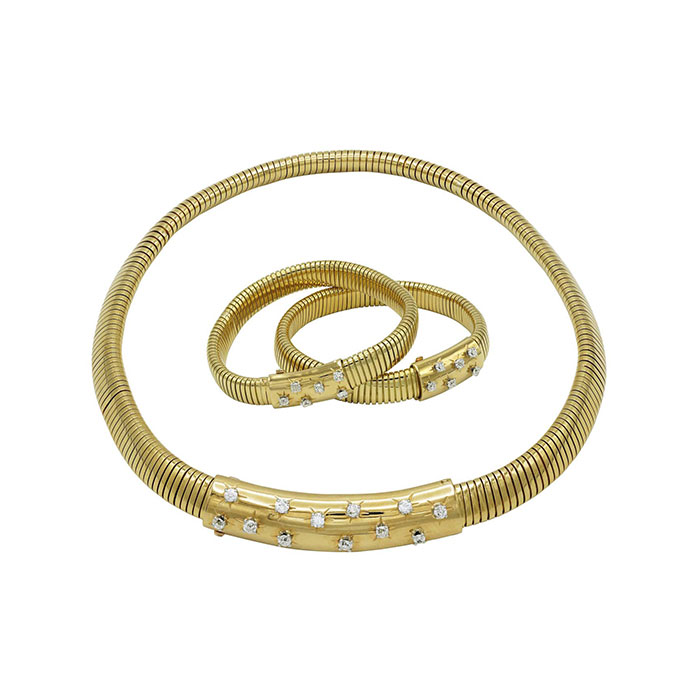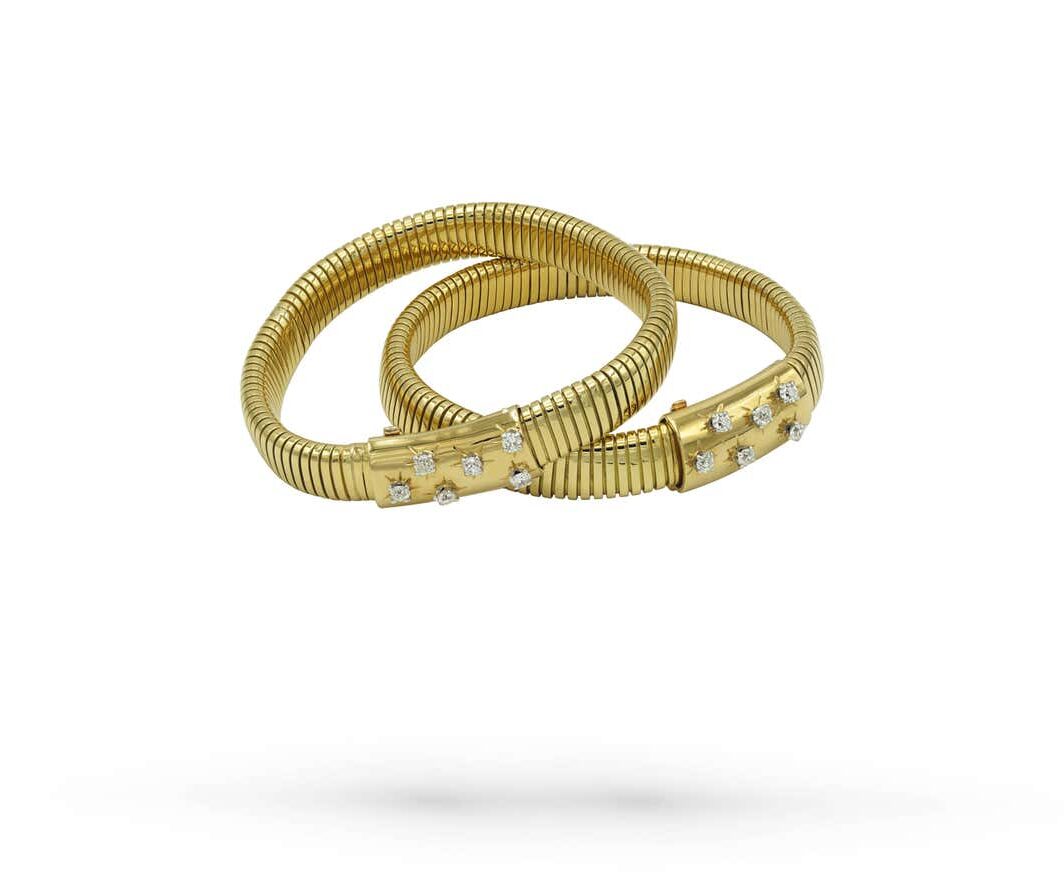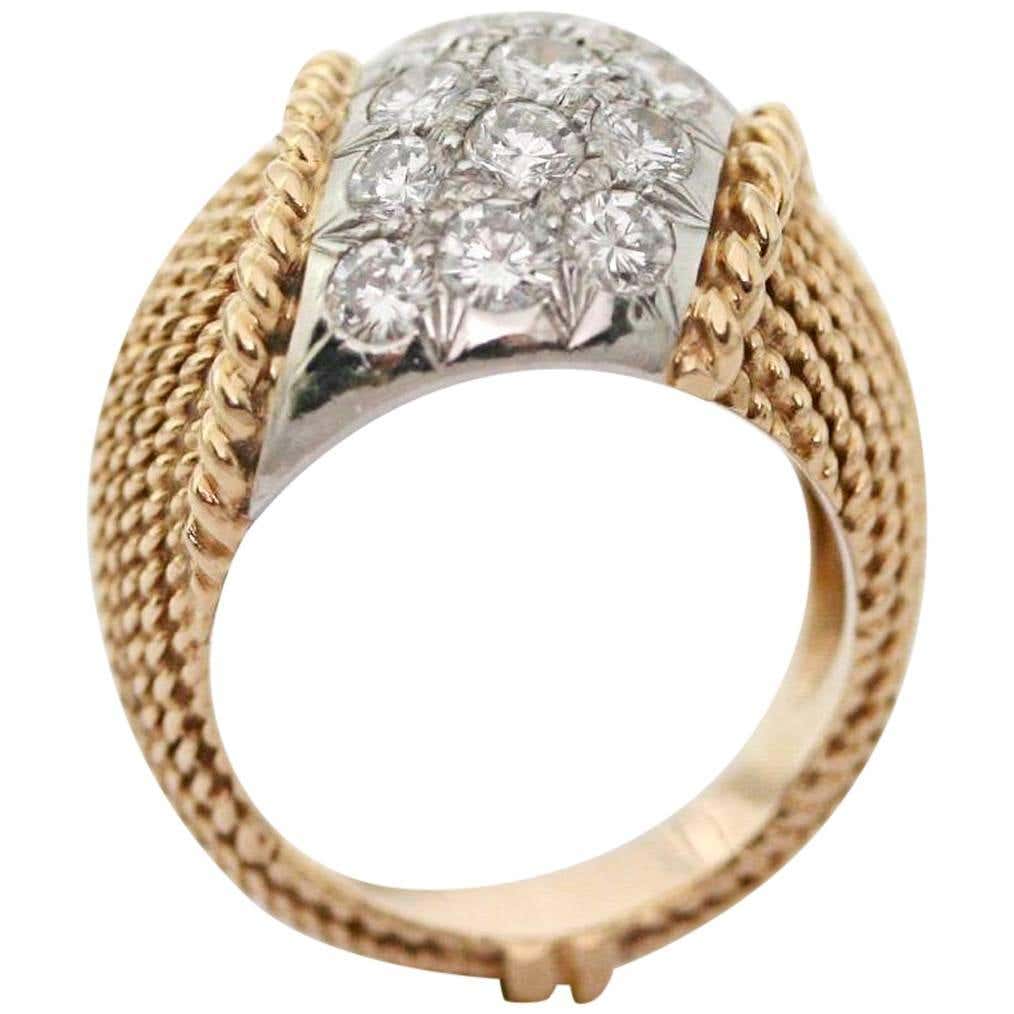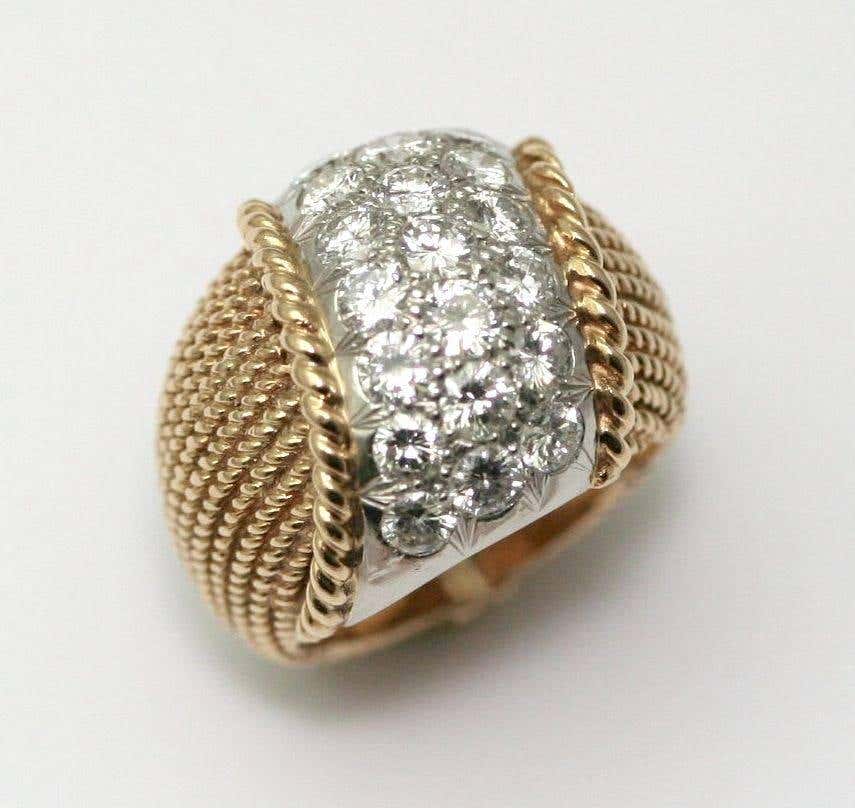VAN CLEEF & ARPELS
History of VAN CLEEF & ARPELS
In Monaco, in the center of Monte Carlo, the Galerie Montaigne encourages collecting Van Cleef & Arpels jewelry.
Between the Hotel de Paris and the Monte Carlo Casino, van Cleef & Arpels has a special place among the jewellers of Monaco. This illustrious house hold a legacy made of luxury and elegance for a clientele accustomed to the exceptional. Galerie Montaigne offers jewels signed by van Cleef & Arpels of Art Deco period, invisible set rings, brooches or earrings with ruby, emerald, sapphire or Alhambra, ‘Rose de Noel’, Ludo collections. The signature Van Cleef & Arpels is a guaranteed investment that can be passed from generation to generation for a timeless femininity.
Van Cleef and Arpels end of XIXth century first half of XXth century
In 1896, Alfred, son of a Charles van Cleef, à diamond dealer marries Estelle Arpels, daughter of Léon Arpels dealer in precious stones. Both grown up surrounded by gems, their union will give birth to Renee, and the creation of jewellery, in 1896, which is the result of their passion. Only ten years later, in 1906, the brand ‘van Cleef & Arpels’ is recorded and the jewellery opened at 22 place Vendôme, where it still remains.
During the Art Deco period (1915-1930), van Cleef & Arpels is greatly inspired and influenced by the themes, motifs and exoticism of the Middle and Far East etc.
Enthusiasm for Egypt and hieroglyphs follows the discovery of Tutankhamun’s tomb in 1922, bracelets and brooches are adorned with hieroglyphs, scarabs, sphinxes, falcons, scenes of Egyptian life and twist perspective figures.
In reference to Chinese and Japanese cultures, van Cleef & Arpels uses delicate drawings, flowers, gardens, pagodas, flexibility and lightness of form, with women in traditional dress, or symbols and creatures like the dragon, all decorated with traditional rubies, sapphires, emeralds, onyx and diamonds, but also jade, coral, mother of pearl and enamel, which is used to remind the lacquer. Themes of the Far East are used on clocks, perfume bottle, tobacco or beauty boxes.
From India, besides the symbolic Buddha, it is the use of emerald, Indian’s favourite stone and owned in quantities by the Maharajas, witch inspired many creations.
Van Cleef & Arpels in the use of bright colours and high quality gems giving birth to exceptional jewellery will highlight all these themes and motifs typical of the 1920s.
In 1918, the designer Emile Puissant is hired and marries Renee, daughter of Alfred and Estelle. He dies in 1926 and Renée became artistic director of the company. Her collaboration with the designer René Sim Lacaze strongly marks the style of the company.
Art Deco means geometric and modern shapes and the fading of Art Nouveau wildlife themes, but van Cleef & Arpels, while geometrising the lines and curves of their jewels, maintain naturalistic themes and floral patterns. Van Cleef & Arpels also won the Grand Prize at the Arts Deco fair in 1925 with a rose design bracelet. Another good example is a 1926 small watch chatelaine with geometric and floral motif. This little watch also illustrates the beginnings of van Cleef & Arpels in watchmaking by creating watches that are actual jewels.
Van Cleef and Arpels Second Half of XXth century
The economic situation deteriorates after the 1929 crisis but van Cleef & Arpels, goes on manufacturing and innovating. In the 1930s La Minaudière or clutch is a best-seller, it is inspired by Florence Jay Gould who kept her accessories such as powder compact, lipstick, lighter, cigarette box, mirror in a large cigarette case. Charles Arpels perfects it to become a climax of feminity and elegance. The Ludo articulated bracelet is launched in 1934, In reference to Louis Arpel’s nickname. In smooth gold or with a hexagonal pattern mesh, it is sometimes studded with precious stones, and it can be a wristwatch
In 1935 van Cleef & Arpels launches the ‘Cadenas watch, it becomes a classic combining elegance and functionality, a true jewel watch, a bracelet with padlock clasp, housing a discreet small dial. Women can now decently wear watches.
But the revolution by van Cleef & Arpels is the invisible set, a patent filed in 1933. This technique requires an extreme mastery and skill so as to show only the gems and no metal, giving the impression that they are next to each other by enchantment, revelling all the stone’s color and shine for the creation of masterpieces.
In 1938, Van Cleef & Arpels marketed what would become one of its iconic creations: the ‘Passe-partout’, a clever convertible jewel which can be a necklace, clip earrings, bracelet, brooch, or belt. The jewel integrated a metal rail system hidden by two flower-shaped clips that is slid on a mesh.
During the Second World War jewels are mainly in gold because of the tricky gem’s supply. Models are named ‘Ballerina’, ‘Dancers’ or ‘Fairy’, the pins are all in lightness, delicacy and grace.
In the Fifties the ‘Zip’ is a success, a necklace and a bracelet inspired by a zipper that can be worn open or zipped. In order to expand its customer base, van Cleef & Arpels launches ‘La Boutique’ a collection of animal pins in affordable prices. Personalities such as Grace Kelly and Jackie Kennedy adored this collection. When Rainier II of Monaco got engaged to Grace Kelly he offered her a van Cleef & Arpels pearl set.
In the end of the sixties the opera diva Maria Callas ordered an amazingly elegant Burmese ruby and diamond flower brooch, perfect for her public appearances. More or less at the same time is launched the celebrated Alhambra model, this quatrefoil motifs is set with ornamental stones such as turquoise, onyx, lapis lazuli, mother of pearl, carnelian, or, malachite.
In the seventies the ‘Rose de Noel’ is launched, another hit with a flower in hard stone petals and a heart of gold and diamonds. The ‘spindle Walska’ is an extraordinary special order, with a bird in flight, wings spread, holding a 96 carat yellow diamond. This spectacular jewel is also convertible into a pendant and earrings.




